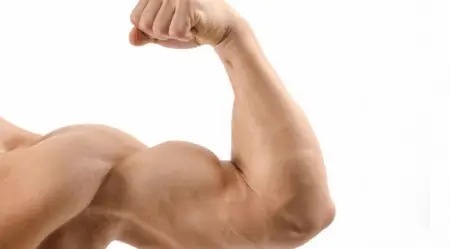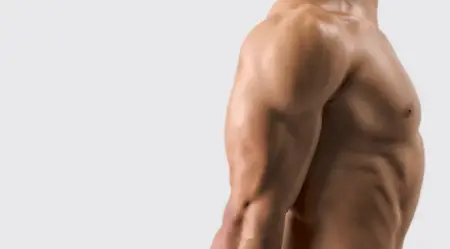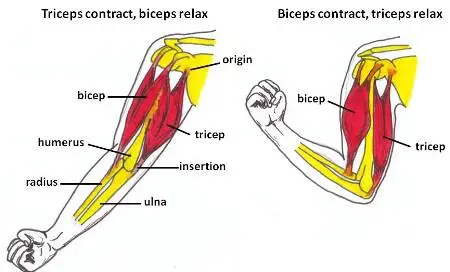The biceps and triceps muscles make up most of our upper arm muscles. These muscles enable us to do many activities like climb, move things, and lift heavy objects. Is it important to know more about these muscles and how they work for us in order to utilize and properly care for them. What, then, is the difference between biceps and triceps? Let’s discuss them more in detail to understand what sets these muscles apart.
Summary Table
| Biceps | Triceps |
| Made up of two muscle bundles: the long head and the short head. | Made up of three muscle bundles: the lateral head, the long head, and the medial head |
| Responsible for forearm rotation and moving the elbow and shoulder | Extends the elbow and moves the elbow and the shoulder but in the opposite direction as the biceps |
| Functions as a flexor, responsible for the pulling action and decreasing the angle between the forearm and the upper arm | Functions as an extensor, responsible for the pushing action and increasing the angle between the forearm and the upper arm |
Definitions

Biceps are also called the “biceps brachii.” The term originated from the Latin word musculus, meaning “little mouse.” This was based on the appearance of the flexed biceps resembling the back of a mouse. Biceps brachii is also a Latin phrase which stands for “two-headed muscle of the arm.” The biceps are made up of two muscle bundles, namely: the long head and the short head. These particular muscles function as flexors. This means that they help bend the elbow, thereby decreasing the angle between the forearm and the upper arm. So technically, the biceps are the muscles responsible for the pulling action. They are also the muscles used in forearm rotation. In trying to develop the biceps, the types of exercises that should be done are those that center on bringing weight closer to your body.
The biceps tend to be smaller than the other upper arm muscles, including the triceps. The biceps are used for the following functions:
- Flexion of the elbow joint: involves moving the forearm toward the body.
- Forearm supination: is the term for turning the palm of the hand to face up.
- Shoulder elevation: this is raising your arm.

Triceps are also called the “triceps brachii.” Sometimes they are referred to as a “three-headed muscle.” The term “triceps” originates from the Latin words tri, meaning “three,” and ceps, meaning “head.” The three muscle bundles that make up the triceps are the lateral head, the long head, and the medial head. These are located at the back of the upper arm. Triceps function as extensors. This means that they help increase the angle between the forearm and the upper arm. Triceps are the muscles you exert for the pushing action. To develop the triceps, you need to focus on exercises that push weight away from the body.
The triceps are used for the following functions:
- Shoulder extension: moving the arm back and behind the body.
- Stabilizing the shoulder: when carrying things overhead.
- Extension of the elbow: move the forearm away from the body.
Common Muscle Injuries for Biceps & Triceps
As with other muscles of the body, both the biceps and triceps can be injured. For instance, overuse of the muscles, acute trauma, and more can injure these muscles.
Some of the most common injuries to biceps include tears and tendonitis. Tears may be caused by overloading the biceps. Tears may require physical therapy or surgery to repair the damage and strengthen the muscles.
Bicep tendonitis may cause pain and stiffness. When this occurs, it’s essential to rest the muscles. If the injury doesn’t heal, physical therapy and cortisone injections may be required.
The most common triceps injuries usually include strains, pulls, and tendonitis. In severe injuries, it is also possible the triceps could rupture. These injuries are more often experienced by weightlifters. Injuries like these may require physical therapy or surgery, depending on their severity.
Triceps tendonitis is usually caused by overuse and usually happens near the elbow. This injury may go away on its own but requires plenty of rest to heal.
Biceps vs Triceps

Biceps and triceps are opposite functioning muscles. This means that if one flexes, the other relaxes. Biceps are made up of two muscle bundles: the long head and the short head. Triceps, on the other hand, are made up of three muscles in the back of the upper arm: the lateral head, the long head, and the medial head. Both muscles move the elbow and the shoulder; however, the triceps move in the opposite direction as the biceps. Biceps are for pulling while triceps are for pushing. Another main action of the biceps is the forearm rotation. Biceps are flexors and they decrease the angle between the arm bones. Conversely, the triceps are extensors, which increase the angle between the forearm and upper arm.
Location
The biceps are on the front of the upper arm, while the triceps are located on the back of the upper arm.
Size
The biceps are about one-third of the total volume of the upper arm. On the other hand, the triceps are larger and are about two-thirds the volume of the upper arm.





